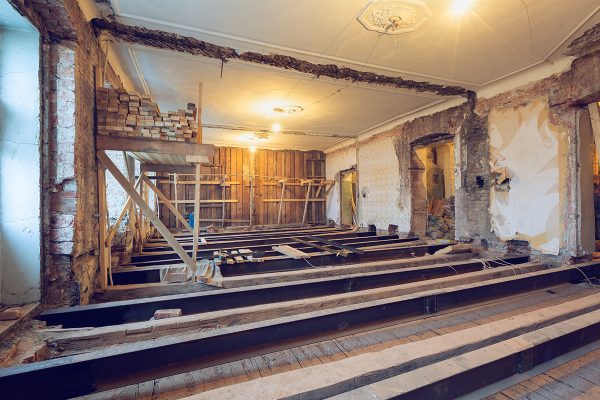As a homeowner, you may want to install a floor register but wonder how far from the wall it should be. Fortunately, we have done the legwork for you on this topic, and here is what we found.
You should install a floor register four inches from the wall. Since the floor register allows the flow of fresh air in your home, it should be installed in the right position.
There are several factors to consider when installing a floor register. Keep reading to get detailed information on where and how to install a floor register and other related topics.
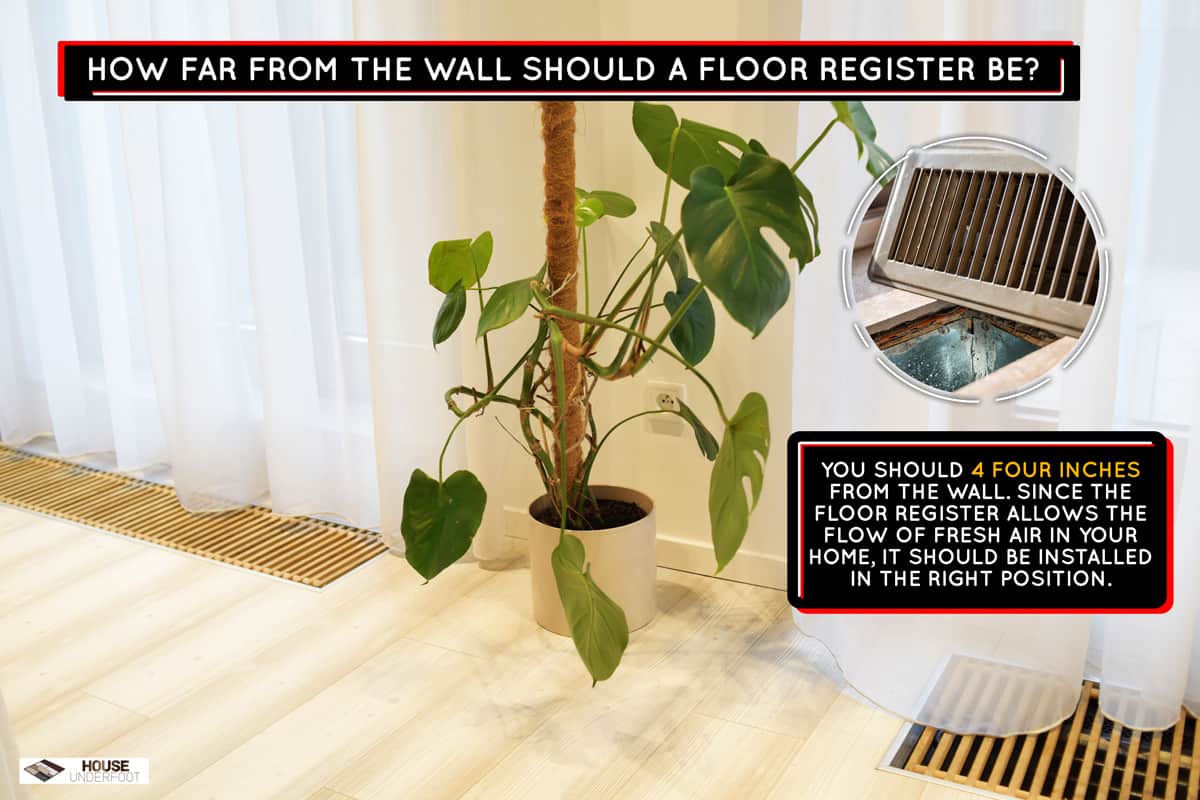
Should A Floor Register Be Close to The Wall?
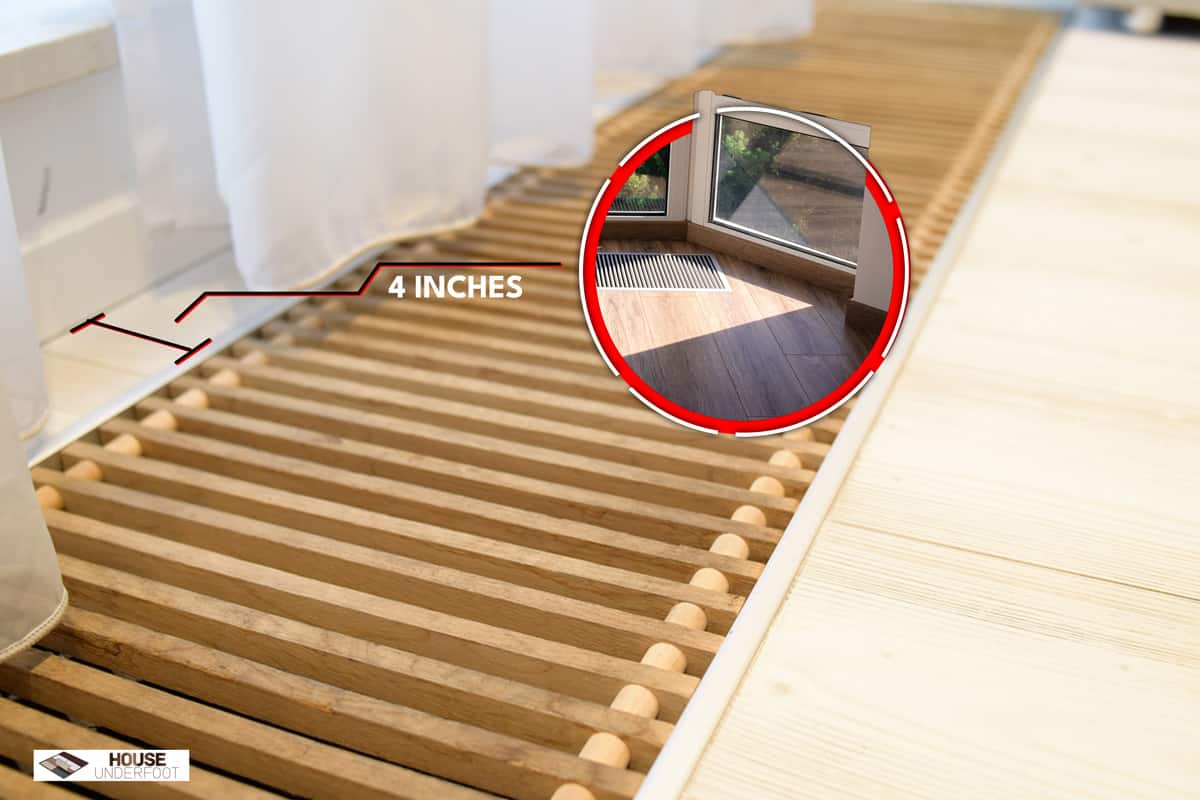
Because rooms have different dimensions, it's difficult to pinpoint an exact position where a floor register should be installed.
As a general rule, floor registers should be installed four inches from the wall. However, the size of the room and the register are factors that you should consider during installation.
It is advisable to install registers at the center of an external wall. If you have two external walls, you should consider installing registers in the middle of both.
For a small room, one duct should be enough, even if there are two external walls. Generally, a register is installed close to a window or door since there is a higher loss of heat and cool air there.
Click here to see this floor register on Amazon.
How Do I Know The Size Of Floor Register I Need?
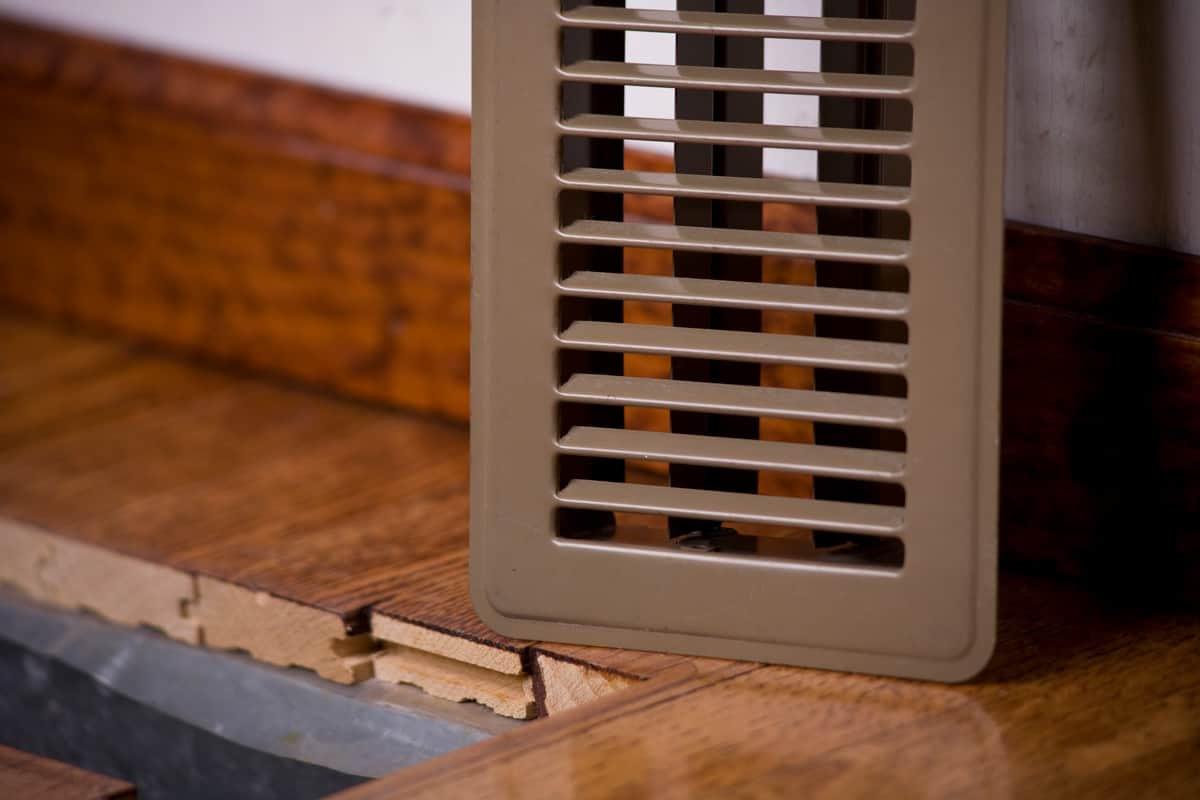
The best way to determine the size of the register that you will need in your room is by measuring the floor opening. This means that you have to measure the length and the width in inches.
If the floor opening you measured is 4 by 10, then you will need to buy a floor register that's 4 by 10. If you are using an existing register to take the measurement, ensure you do not make the mistake of measuring the faceplate.
This is because faceplates vary from manufacturer to manufacturer, which means that they have different styles. Once you have gotten the size of the floor register that you will need for your room, you can go ahead and buy it.
Which Way Do Floor Registers Point?
Every room has a perimeter, and the floor register will usually be located on the perimeter. Contractors set up the floor registers in a home in such a way that they will make a house cooler or warmer.
During the summer, if a floor register points up, the cold air that would have made your home more comfortable will be lost. Positioning the floor registers in such a way that they point toward the rest of the room will make your home cooler in the summer.
As for the winter, the best direction for the register to point is towards the wall. But you should note that the floor register can be adjusted to your own desired airflow.
How Do You Attach Registers To The Floor?

As we said earlier, floor registers vary from manufacturer to manufacturer, and this will determine the installation process because of the register's design. However, the general installation is easy if you follow the simple steps below:
Step 1: Measure The Floor
The first thing to do before installing a register is take a measurement of the floor you will be working on. This is a very crucial step.
Step 2: Cut Through The Floor
With a saw, cut through the floor in a rectangular shape based on the measurement taken. Ensure that the hole is big enough for the floor register to fit in.
Step 3: Fit The Frame
You can make use of metal screws to secure the register in place. While doing this, be careful with the screws so they don't go down the flooring.
Step 4: Install The Register
On the floor opening, you can now attach the register. Make sure the edge is aligned and then screw the sides of the register tightly before you press it to fit into place.
Carefully follow the steps above, and make sure you maintain your floor register after installation. Maintenance of your floor registers is easy, as you just have to clean the surface.
How Much Does It Cost To Install A Floor Register?
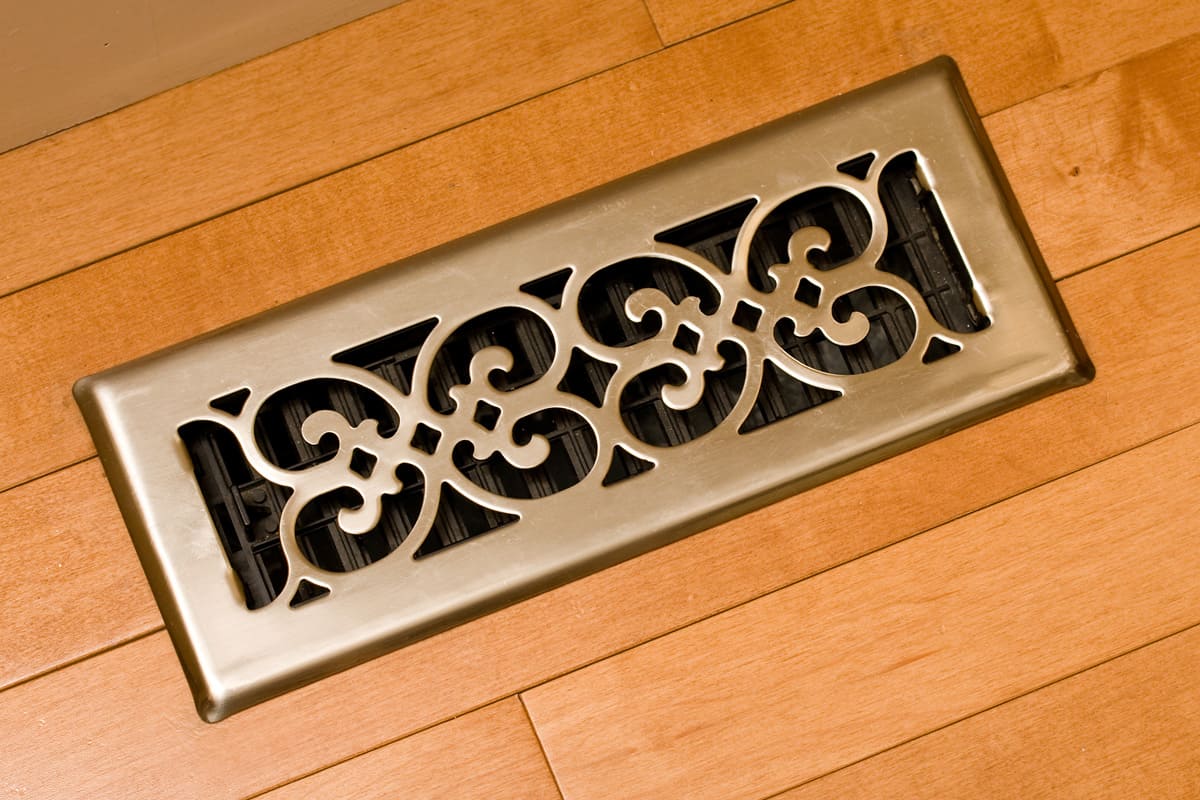
The cost of installing ductwork and floor registers varies, but the national average cost of it is between $1900 - $6000. You can also be charged as high as $4000 per 300 linear feet.
The cost charged for an existing house cannot be compared to the cost charged on a new house. Other cost determinants are location and the size of the house. The bigger the space, the more registers required.
Can You Spray Paint A Floor Register?
Yes, you can spray paint your floor register. Doing this will make the register more attractive. To spray paint your register, you will be needing primer, spray paint, and a clean cloth.
Check out this primer on Amazon.
Here is a step-by-step guide for spray painting a floor register:
- Remove and clean the floor registers. Get rid of any dirt and dust so that the surface can be as smooth as possible.
- Spray the registers with a primer and then leave them to dry. Using a primer will make the paint stick better.
- Spray paint the floor registers. You can use any color of paint and the coating should be done at least four or five times to ensure the paint touches all parts.
- Dry the floor registers outside before bringing them back into your house for installation. Do this and see how unique your home will look.
Check out this spray paint on Amazon.
Can I Close My Floor Registers?
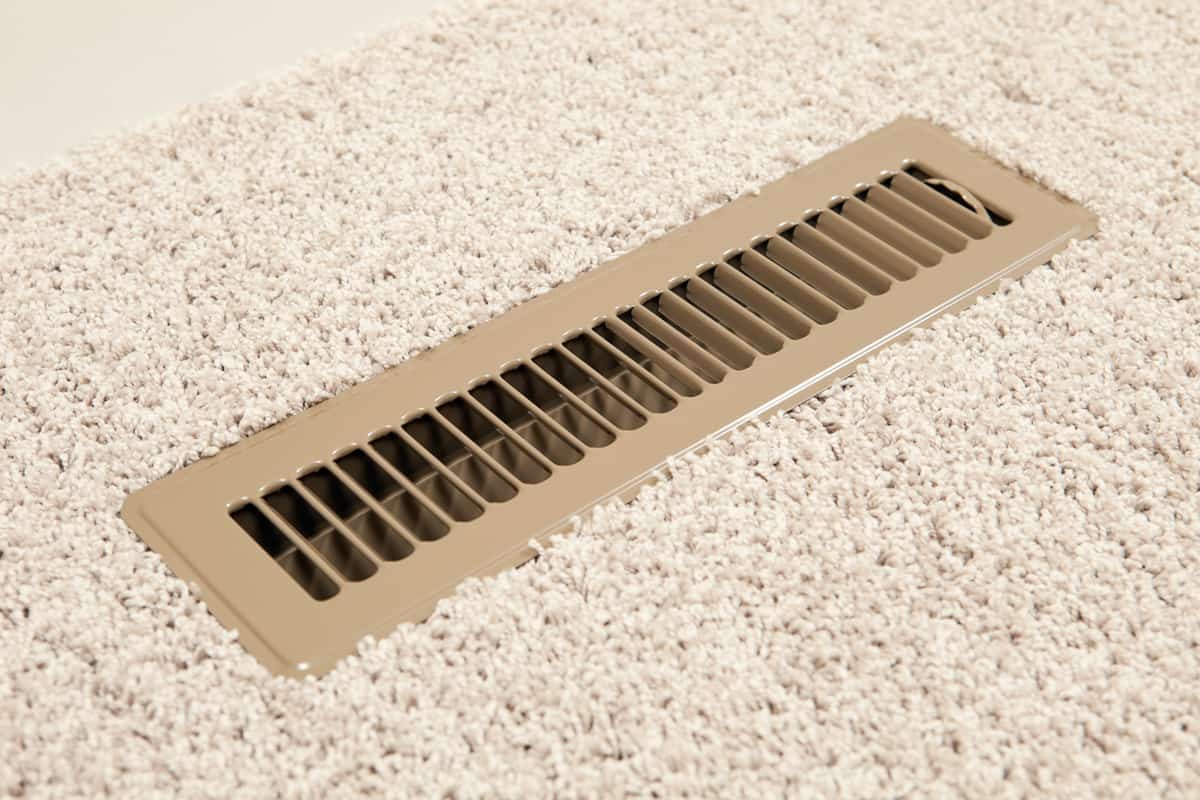
It is not recommended to close your floor register. This is because the floor register is designed to make your home comfortable through the air it passes into the room. If you close it, the flow of air will be affected.
When air is unable to pass through the register, pressure will start building up in the system. The system could start overheating and might later break down. When this occurs, it will cause air leakage that will result in poor operation, costly repairs, and energy waste.
When the floor register is closed, the system will not stop the air from coming but will take the air to other rooms in your home.
The only solution to this is to keep it open. However, you can do a partial closure so air keeps coming into the room and you also get to save on energy.
To Wrap Up
Installing a floor register is not as difficult as you may think. During installation, you should position the register four inches from the wall. To install a floor register, all you have to do is measure and cut through the floor, fit the frame, and then install it. Be sure to keep your floor registers clean.
If you enjoyed reading this post, here are articles you may like:
Accidentally Cut Floor Joist - What To Do?
Can You Run A Toilet Drain through Floor Joist?
How To Cut Out A Section Of Floorboard [And Best Tools For The Job]





